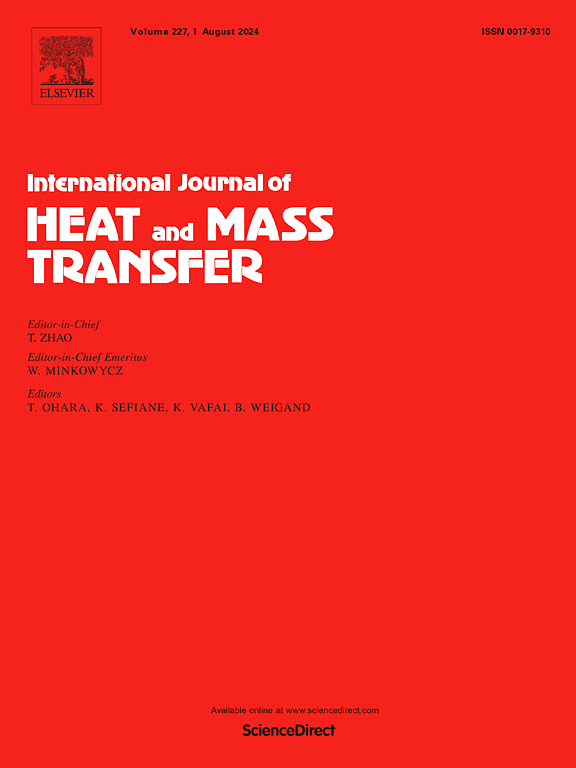Numerical study for one-dimensional non-isothermal transport of organic contaminant in the three-layer composite liner containing a defective geomembrane
IF 5.8
2区 工程技术
Q1 ENGINEERING, MECHANICAL
International Journal of Heat and Mass Transfer
Pub Date : 2024-11-13
DOI:10.1016/j.ijheatmasstransfer.2024.126417
引用次数: 0
Abstract
The non-isothermal case in bottom composite liners not only induces thermal diffusion behavior, but also alters transport parameters. To date, however, limited work has been done on this topic. The present research constructs a model for one-dimensional non-isothermal transport of organic contaminant in the three-layer composite liner containing a defective geomembrane (GMB), which for the first time systematically includes the impacts of temperature-dependent transport parameters, and also considers the multiple transport mechanisms. The developed model is then solved via finite difference, and its rightness is well-proven through comparisons with the two experiment results and the other calculation approaches. After that, the numerical analysis shows that the temperature-dependent transport parameters exert a combined effect on the transport process, in which changes in diffusion coefficients and hydraulic conductivities with temperature remarkably accelerate the transport rate, whereas such a change for distribution coefficients leads to an opposite trend. The barrier performance assessment suggests that the growth of temperature difference in the composite liner, as well as the GMB defects density, reduces the defined breakthrough time () and increases the bottom transport flux. Moreover, 1 cm geosynthetic clay liner is noticed to extend by approximately 2.23 years, while 0.1 m compacted clay liner yields the increment of by about 12.1 years. These findings contribute to the reasonable evaluation of bottom composite liners’ barrier performance at a non-isothermal environment, which could provide guidance for optimizing their engineering design.
有机污染物在含有缺陷土工膜的三层复合衬垫中的一维非等温迁移数值研究
底部复合内衬的非等温情况不仅会引起热扩散行为,还会改变传输参数。然而,迄今为止,有关这一主题的研究还很有限。本研究构建了一个有机污染物在含有缺陷土工膜(GMB)的三层复合衬垫中的一维非等温迁移模型,该模型首次系统地包含了与温度有关的迁移参数的影响,并考虑了多种迁移机制。然后,通过有限差分法求解所建立的模型,并通过与两次实验结果和其他计算方法的比较,充分证明了该模型的正确性。随后,数值分析表明,与温度相关的迁移参数对迁移过程产生了综合影响,其中扩散系数和导流系数随温度的变化明显加快了迁移速度,而分布系数的变化则导致相反的趋势。阻隔性能评估表明,复合衬垫中温差的增大以及土工合成材料缺陷密度的增加,缩短了规定的突破时间(tb),增加了底部输移通量。此外,1 厘米土工合成粘土衬垫可将 tb 延长约 2.23 年,而 0.1 米压实粘土衬垫可将 tb 延长约 12.1 年。这些发现有助于合理评估底部复合衬垫在非等温环境下的阻隔性能,从而为优化其工程设计提供指导。
本文章由计算机程序翻译,如有差异,请以英文原文为准。
求助全文
约1分钟内获得全文
求助全文
来源期刊
CiteScore
10.30
自引率
13.50%
发文量
1319
审稿时长
41 days
期刊介绍:
International Journal of Heat and Mass Transfer is the vehicle for the exchange of basic ideas in heat and mass transfer between research workers and engineers throughout the world. It focuses on both analytical and experimental research, with an emphasis on contributions which increase the basic understanding of transfer processes and their application to engineering problems.
Topics include:
-New methods of measuring and/or correlating transport-property data
-Energy engineering
-Environmental applications of heat and/or mass transfer

 求助内容:
求助内容: 应助结果提醒方式:
应助结果提醒方式:


